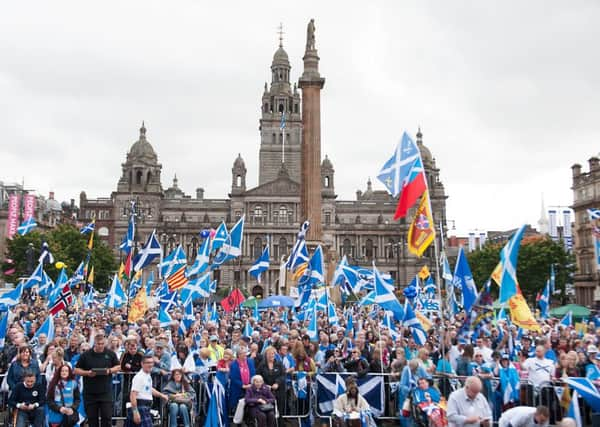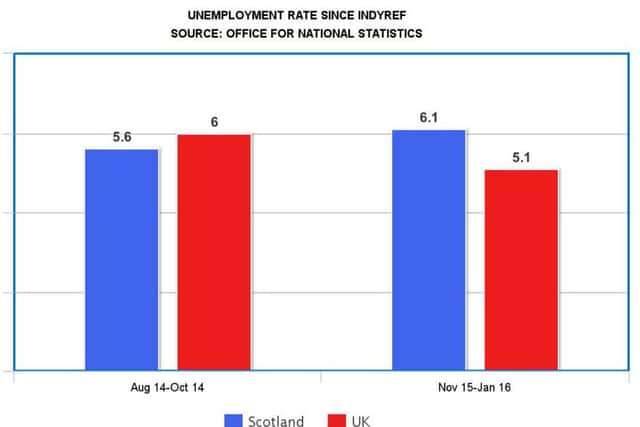Independence Day: How has the economy fared since indyref?


The latest Government Expenditure and Revenue Scotland (GERS) figures, published earlier this month, revealed the country had plunged £14.9 billion into the red for 2014-15 when a geographic share of North Sea revenues was taken into account.
That amounted to a deficit equivalent to 9.7 per cent of Scottish GDP, compared with the overall UK deficit of 4.9 per cent.
Advertisement
Hide AdAdvertisement
Hide AdThe report said that figures reflected “the decline in North Sea revenue, which fell by 55 per cent compared to 2013-14”.


North Sea revenues dropped from more than £10.9bn in 2011-12 to less than £4.8bn in 2013-14, before falling to £2.25bn last year.
In the Scottish Government’s white paper on independence, called Scotland’s Future, it estimated that oil and gas production in Scottish waters could generate about £48bn in tax revenues between 2012-13 and 2017-18 “based on industry estimates of production and an average cash price of approximately $113 per barrel”.
However, the price of Brent crude has fallen from about $97 a barrel in September 2014 to a little over $41 today – having dropped as low as $27 earlier this year.


At the time of the referendum on 18 September 2014, Scotland’s unemployment rate stood at 5.6 per cent, but that figure rose to 6.1 per cent for the three months to January 2016, the latest period for which official figures are available. Over the same period, the unemployment rate for the UK as a whole has fallen from 6 per cent to 5.1 per cent.
The proposed independence day of 24 March was chosen to follow the dissolution of the current term of the Scottish Parliament. The date also happens to be the anniversary of both the Union of the Crowns in 1603 and the signing of the Acts of Union in 1707.
However, the need to maintain key back office functions, IT systems and procurement processes would have left Scotland’s new welfare system reliant on the Department of Work & Pensions and HM Revenue & Customs, with the date for Scottish Revenue’s own IT system going live unlikely to arrive before 2020.
Some transitions would have taken even longer – it might not have been until 2022 that the Scottish Motor Services Agency took over from the DVLA.
